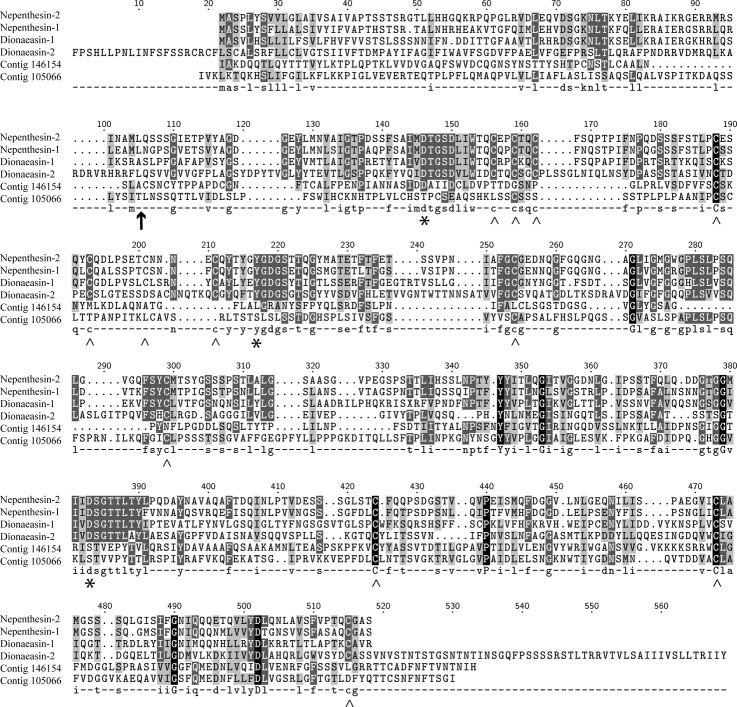Fig. 4.
The alignment of the Venus flytrap aspartate proteases with nepenthesin 1 and nepenthesin 2 identified from Nepenthes gracilis. The upward-pointing arrow (↑) indicates the cleavage site between the activation peptide and the mature nepenthesin proteases. The asterisks (*) represent the active site residues in the nepenthesins, and the carets (∧) indicate the positions of the cysteine residues involved in the disulfide bridges in the nepenthesins. The alignment strongly suggests that two of the Venus flytrap aspartic proteases are catalytically active proteases (referred to as dionaeasins), in contrast to the two other identified proteins (contigs 146154 and 105066), which are likely not catalytically active proteases.

